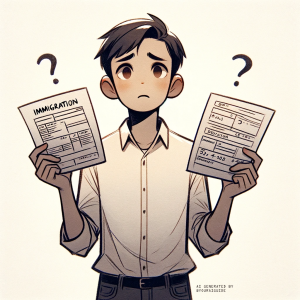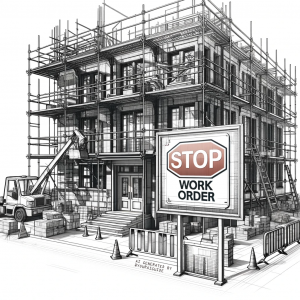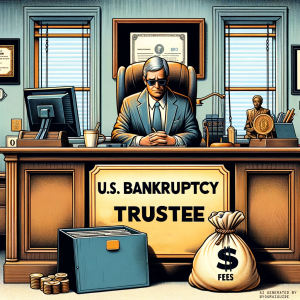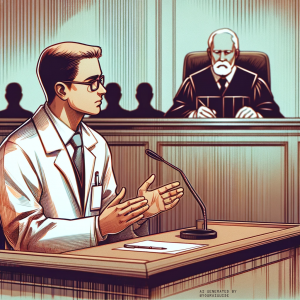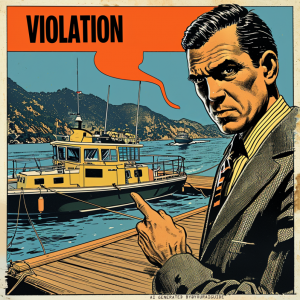Government power, from federal agencies to counties, highlights January session
SESSION PREVIEW
on Jan 8, 2024
at 8:42 pm
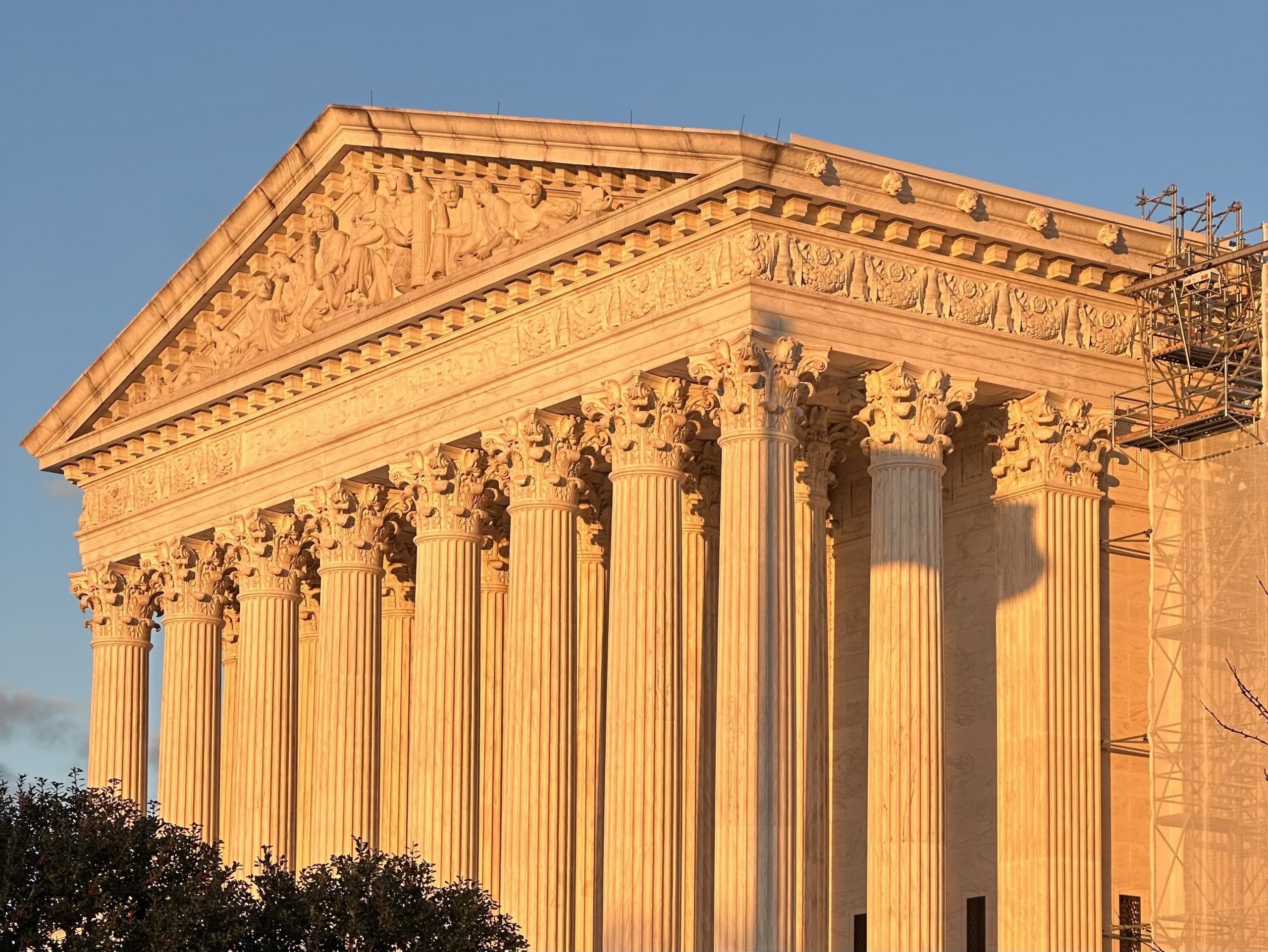 The Supreme Court’s January session began on Monday. (Katie Barlow)
The Supreme Court’s January session began on Monday. (Katie Barlow)
The justices returned to the bench on Jan. 8 for a packed session of oral arguments – starting with immigration policy and the post-9/11 “No Fly List” and ending on Jan. 17 with two cases that could upend the functional power of the federal administrative state.
Monday’s arguments began with two consolidated cases, Campos-Chaves v. Garland and Garland v. Singh, in which the court will consider what kind of notice the government must provide before a noncitizen can be deported for not appearing in court.
Under 8 U.S.C. § 1229(a), the government must provide a “notice to appear” in all removal proceedings. The statute includes a list of information the government must include – most notably, the time and place of the removal hearing. A noncitizen who does not attend a removal proceeding can be ordered removed as long as written notice has been provided to him under the statute.
The question before the justices on Jan. 8 is whether the government complies with the statute, and therefore provides sufficient notice (so that the noncitizen can be removed after failing to attend the removal hearing), if it does not include all of that information in a single document, or whether it is enough that later forms provide information such as the time and place of the proceeding.
The justices then heard FBI v. Fikre, a dispute arising from the FBI’s “No Fly List.” The FBI created the No Fly List after the Sept. 11, 2001, attacks to bar certain people whom the government considers a risk to national security from boarding commercial flights into U.S. airspace. Yonas Fikre, a U.S. citizen of Eritrean descent, discovered in 2010 while he was in Sudan that he had been added to the list, leaving him unable to return to the United States for more than four years.
When FBI agents interrogated Fikre about the mosque he attended in Oregon they suggested that he could become an informant in exchange for his removal from the list. Fikre declined. A few months later Fikre traveled to the United Arab Emirates, where he was imprisoned, interrogated, and tortured. Officials there told him that they were acting at the behest of the FBI.
Fikre flew to Sweden after his release and sought asylum. The Swedes refused his request and instead chartered him a private flight back to the U.S. Once there, Fikre sued the FBI for violating his constitutional rights.
Three years after he filed his lawsuit, the FBI removed him from the No Fly List and promised that “based on the currently available information” it would not put him on the list again. The government argues that doing so renders his suit moot – that is, no longer a live and viable lawsuit. Read more about the argument in our full preview of the case.
In recent years, property rights disputes have made headlines at the court — notably last year’s dispute between Idaho homeowners Michael and Chantell Sackett and the EPA, in which the justices sided with the property owners and curtailed the Clean Water Act’s protections for wetlands. On Jan. 9, the justices will hear the case of a California man who argues that fees he faced when trying to build on his property violate his rights.
George Sheetz applied in 2016 for permits to build a home for his wife and grandson on property he owned in Placerville. The County of El Dorado required he pay a “traffic impact mitigation” fee of more than $23,000, which the county said was included to cover costs that new construction would create for the community, primarily to improve local roads. After paying the fee and building his house, Sheetz sued for a refund.
Sheetz came to the Supreme Court, asking the justices to apply the court’s Nolland/Dolan test and find the county’s fee a violation of the takings clause. In Nollan v. California Coastal Commission and Dolan v. City of Tigard, the court held that if a government wants to require a resident to give up property for a land-use permit, it must demonstrate that the condition imposed on the property owner is legitimately related and proportional to the effects of the proposed land use. That test, Sheetz says, applies here as well.
For more on Sheetz’s argument and the case’s possible broader impact on housing costs, read our full preview.
Tuesday’s second case will also throw some readers back to terms past. United States Trustee v. John Q. Hammons Fall 2006, LLC is a fairly straightforward follow-up to 2022’s Siegel v. Fitzgerald, in which the court found unconstitutional disparate fees between two bankruptcy divisions. Since 1986, bankruptcy cases in Alabama or North Carolina have been administered by trustees appointed by the judicial branch, while all other cases have been administered by the U.S. Trustee Program in the Department of Justice. The administrative fees bankrupt businesses pay can be quite large in the cases of big companies. But the Alabama and North Carolina trustees had charged much less than fees charged in other states, with the deficit coming out of the judiciary budget. That, the justices said, violated the Constitution’s requirement that Congress provide “uniform Laws on the subject of Bankruptcies throughout the United States.”
The court’s holding in Siegel leads to the fairly obvious next question: What to do about all the money? Does the U.S. Trustee need to grant refunds for all the increased fees paid in most states since 1986, or should it require the collection of additional fees from the smaller number of debtors in Alabama and North Carolina?
On Jan. 10, the justices will hear Smith v. Arizona, a dispute over whether allowing a stand-in to present an absent expert’s report at trial violates a defendant’s Sixth Amendment right to confront the witnesses against him.
In 2019, agents with a search warrant found Jason Smith and two others inside a shed which contained six pounds of marijuana, meth, and drug paraphernalia. Smith was charged with five felony counts.
Arizona Department of Public Safety forensic scientist Elizabeth Rast tested the drugs found in the search. But, before Smith’s case could go to trial, Rast left the department. Greggory Longoni testified using Rast’s report, over Smith’s objection. The jury convicted Smith on two counts of possession, and he was sentenced to four years in prison.
Smith argues that the trial violated his constitutional rights because he was not able to confront or cross-examine the expert witness, Rast, on her findings. But Arizona says that Longoni was not merely presenting Rast’s work but testifying on his own “independent opinion” based on her report.
The court will return for two more days of arguments on Jan. 16., starting out with a relatively new tactic in securities fraud suits. The Securities Exchange Act, for nearly 100 years, has prohibited any manipulation or deception of investors. The question in Macquarie Infrastructure Corp. v. Moab Partners, L.P. is whether a violation under a Securities and Exchange Commission regulation, Item 303 of Regulation S-K, can support a claim of securities fraud.
Item 303 requires companies to disclose information about known trends or uncertainties that are “reasonably likely to have material effects” on financial conditions or operations. The investment firm Moab Partners sued Macquarie in 2018 after the infrastructure company announced lower earnings related to declining demand for a type of fuel oil for which one of its businesses provided storage tanks, and its stock dropped. Moab alleged that Macquarie had concealed information about upcoming changes to the International Maritime Organization’s regulations restricting the fuel oil. This, the firm alleged, was a violation of Item 303 and constituted securities fraud.
Macquarie argues at the Supreme Court that fraud claims under the Securities Exchange Act “cannot be based solely on an alleged violation of Item 303.” The company also argues that suits broadly based on undisclosed “trends” may in practice be suits over a company’s failure to predict the future. Lower courts have been divided on whether to allow Item 303 fraud claims and this will be the justices’ first opportunity to weigh in.
In response to increased flooding, the Texas Department of Transportation raised Interstate Highway 10 near Houston and built a concrete median barrier. During heavy rainfall, these changes worked to maintain the highway as an available evacuation route. Farmers and landowners in Devillier v. Texas, scheduled for argument on Jan. 16, argue that the concrete barrier also worked as the state intended to keep water off the highway and created a dam. When the center barrier blocked water from moving south into the Gulf of Mexico, water remained on the north side of the I-10 and flooded the land. Landowners sued for compensation, alleging the flooding, during Hurricane Harvey and Tropical Storm Imelda, was a taking of their land under the Fifth Amendment. Texas, they argue, “deliberately us[ed] those farms, ranches, and homes as a sprawling stormwater-detention pond” and the takings clause is the proper remedy for the government to compensate them for the damage.
Texas argues that it is up to Congress to create a cause of action for Fifth Amendment takings clause claims against states, which it has not done. The landowners, the state says, do not have a right to sue for takings clause damages.
The court will end the January session with two of the biggest cases of the 2023-24 term, Relentless v. Department of Commerce and Loper Bright Enterprises v. Raimondo. Both cases are challenges to a federal rule that requires fisheries to pay the salaries of compliance observers on their boats. The payment requirement is based on an interpretation of federal law by the National Marine Fisheries Service. But the cases ask a broader question: Whether the justices will do away with a decades-old precedent known as the Chevron doctrine, in a decision that could severely limit the power of federal administrative agencies.
In Chevron v. Natural Resources Defense Council, the court held that when a federal law is ambiguous, courts should defer to an agency’s reasonable interpretation of the statute. Criticism of that doctrine has made headway in recent years, including among some of the court’s conservative justices. Until now the court has sidestepped the issue, and in some cases simply ignored the doctrine while limiting its scope. But here the challengers have asked the court directly to overrule the case, or at least its position. In her brief for the Department of Commerce, Solicitor General Elizabeth Prelogar told the justices that overruling the doctrine “would be a convulsive shock to the legal system.”


